Recently we looked at the TRENDnet TEG-S762 as part of our 2.5GbE switch series. One alternative is the QNAP QSW-2104-2S-A. This has two SFP+ 10GbE ports for uplinks or devices and four 2.5GbE ports. It is also one of the lower-cost 2.5GbE switches we found that also had 10GbE ports making it interesting.
Ultimate Fanless 2.5GbE Switch Roundup
You may have seen that we published the Ultimate Cheap Fanless 2.5GbE Switch Mega Round-Up. Here is the video for that one where this switch appeared.
We decided to do the round-up first and will be filling in with reviews that we had not published at that point, including this one.
Just to note, we have 6 more switches in the lab for testing already, and another 8 on the list of to-do that are not in the switch round-up we published. We are going to add them to the round-up page as we review them.
QNAP QSW-2104-2S-A Review 2x SFP+ 10GbE and 4x 2.5GbE Unmanaged Switch
The switch itself is similar to another switch we saw previously. There are two SFP+ 10GbE ports (1-2) and four 2.5GbE ports (3-6). The DC input and status lights are also on the front panel.
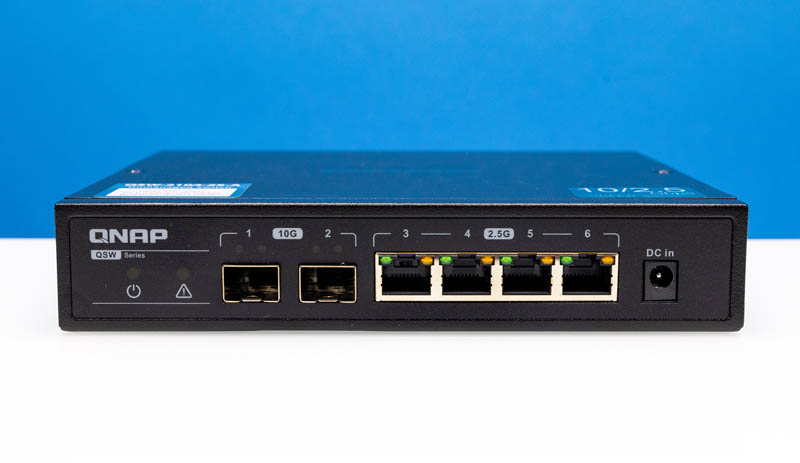
The top says “QNAP” and has a few stickers.
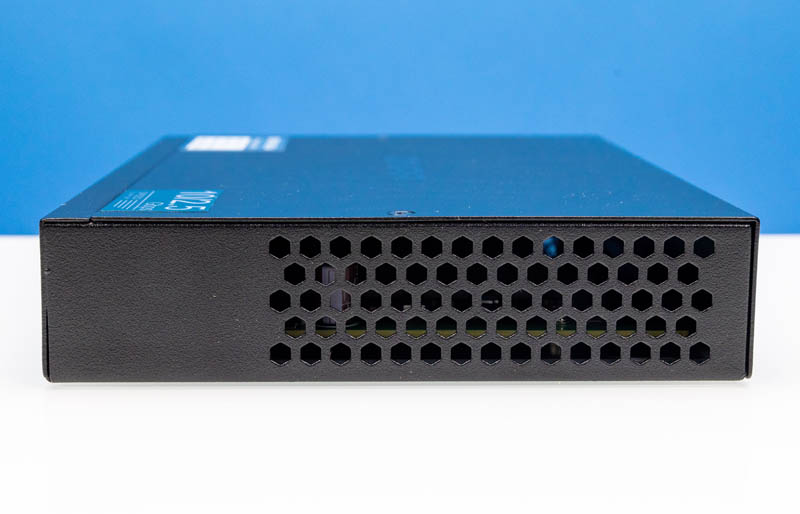
There two sides only have vents.
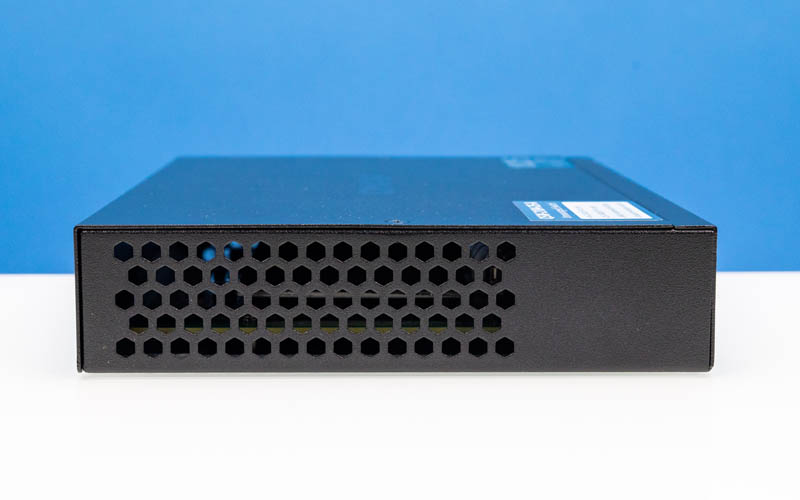
Something we noticed, and that felt notable about this switch is that the vent patterns, dimensions, and so forth looked a lot like another switch that we reviewed recently, the TRENDnet TEG-S762 a 2x 10Gbase-T and 4x 2.5GbE unmanaged switch. Here is the same profile view of that switch for side-by-side reference. We will let our readers decide for themselves how similar these chassis look.
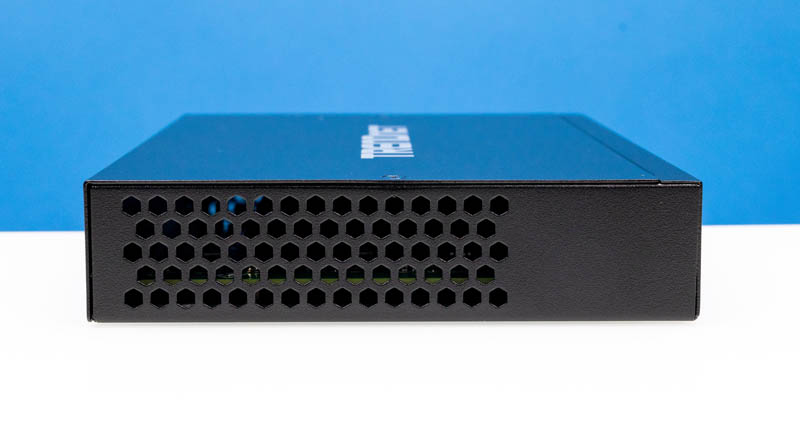
The rear simply has screws for opening the lid.
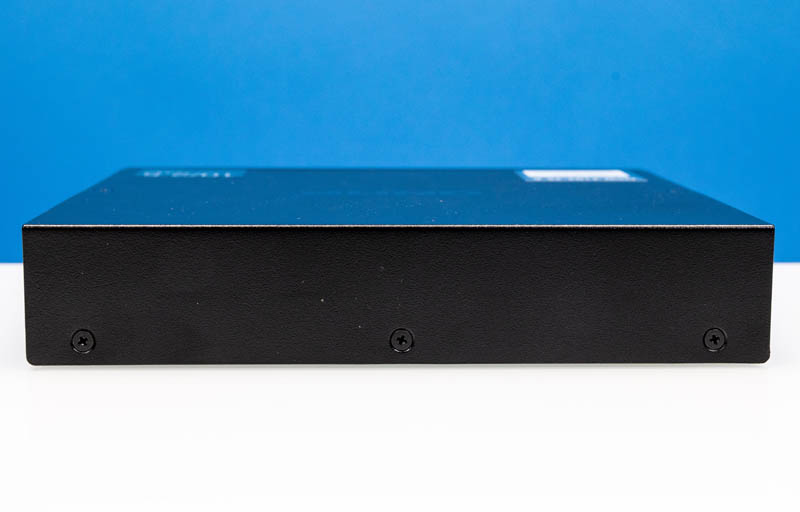
Inside the switch, we have a large black heatsink covering the switch chip(s). It is a different shape versus the TRENDnet unit to account for the SFP+ cage depth. On the other hand. the vents on the bottom of the chassis are a similar design to that switch as well.
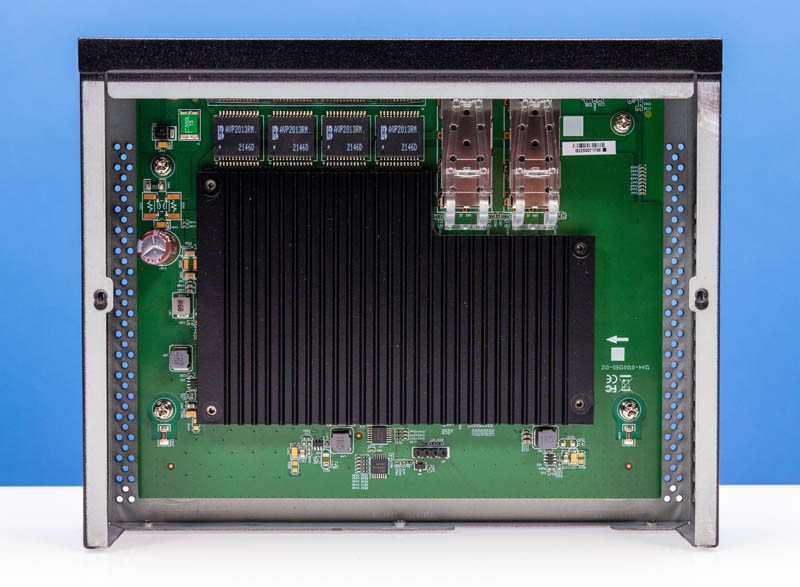
Next, let us get to the management, performance, power consumption, and our final thoughts.

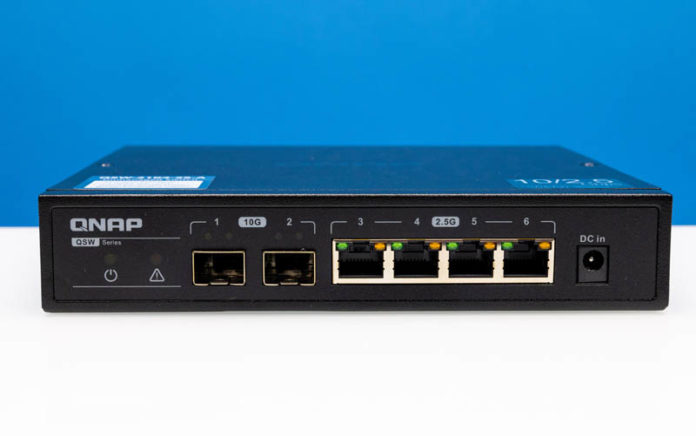



Is it just me, or are 10Gbps ports cheaper than 5Gbps ports? Is there really no way to have a 5GBASE-T device connect to an SFP+ cage?
10G ports are cheaper because they’re higher volume
Sridhar Ayengar> 5 Gb is only with RJ45 “T” port. SFP+ are commonly 1/10 Gb.
You can use a SFP-10G-T module compatible with multigigabit Nbase-T (2.5/5/10) if you need 5 Gb.
Many of them were tested on this site.
I have this same switch and it’s great, when it connects.
I (and many people with the same switch) have a really hard time getting it to work at 10Gb with a variety of SFP+ modules. I eventually got it to recognise my Cisco LR modules but it took many hours. I also tried a handful of 10Gbe DACs and they all worked at 10Gb instantly.
@Sridhar Ayengar: consumer 2.5GbE was super expensive 3 years ago. Distributors milked it as much as possible until the cheap no-brand Chinese/Asian models appeared. Distributors have every intention to rinse and repeat with consumer 5GbE. Consumer 2.5GbE and 5GbE are recent inventions compared to 10GbE which has been used for decades by data centers and corporations.
Using 2.5GbE makes sense now because it appears on recent (pricey) motherboards while the cards, USB adapters and switches are relatively cheap now.
On the other hand, I do not see any advantage in using 5GbE let’s say for the next 3 years due to pricing. Also, the power consumption of 5GbE hardware is closer to that of 10GbE than 2.5GbE. Many series of USB 5GbE adapters are pure POS, the internal common USB chipset is limited to 5Gbps, the so-called 3.0 Gen1; the result is that you get the max 3.5Gbits/sec not the expected 4.5Gbits/sec (because of the line encoding and overheads). What a joke. Personally, I considered it false advertising, and they should be sued by the appropriate Federal Agency.
The conclusion is that if you want faster than 2.5GbE, go directly for 10GbE. SolarFlare cards, for instance, can be had used for $25 or less on eBay. Old SFP+ 10GbE hardware will not auto-negotiate with consumer 2.5 and 5 GbE because the latter did not exist when this hardware was manufactured. But all that old, still working perfectly, hardware is pervasive on eBay.
I was shopping for a sub-$200 2.5G switch with SFP+ and was choosing between this one and the Zyxel XGS1010-12 (which also has 2x 10GbE SFP+, only 2x 2.5GbE, but 8x 1GbE).
I ended up getting the QNAP and have been very happy with it. I have not ran into any issues with SFP+ compatibility as mentioned by @Liam, but have only used transceivers from Cisco (SFP-10G-SR) and Finisar, as well as Cisco DACs.
One small thing that I really appreciate is that all the ports (both network and power) are on the same side, which means easier cable management and less clutter. Looking at the roundup it seems that most makers are moving in that direction (except Netgear?).
@domih +1. Very well said regarding 5 GbE!
Could somebody check the TTL header and see if you get any useful output on the console? This switch would be perfect if it would allow you to configure VLAN on the switch port.
I have the all-RJ45 version of this switch, the QSW-2104-2T.
BEWARE – I think there is a fatal flaw with this switch, and it’s identical brother the TrendNET TEG-S762. I got the TrendNET first and used it for a few weeks before noticing intermittent disconnects/reboots several times per day. I did a warranty exchange, and the replacement started doing the same thing just a few weeks later.
So, I bought the QNAP QSW-2104-2T, not realizing it would have the identical design/chipset and the same persistent issues. I started experiencing issues with it just days after my 30-day return period. I started tickets with QNAP. They acknowledged the issue and sent me firmware and necessary instructions for how to update via USB to TTL connection. Within a week after updating the firmware, the intermittent hangs/reboots started again. At this point, I don’t know what else to do. The PCB layout between the TrendNET and QNAP are identical. However, the firmwares are different (yes I did try to flash the QNAP firmware to the TrendNET without success).
This is not a user-error or customer service rant. This is a real warning that I hope you will head if you’re considering this switch or the TrendNET equivalent.
If STH wants to reach out to me to confirm, I can provide ticket numbers, PCB images, receipts, etc.
My modem uses a 5GB RJ45 for my 3.5GB internet service. I simply use a 10GBase-T SFP+ to RJ-45 transceiver plugged into a 10GB SFP+ port on my switch. The transceiver negotiates 5GB with my modem and “converts” to 10GB for the SFP+ switch.